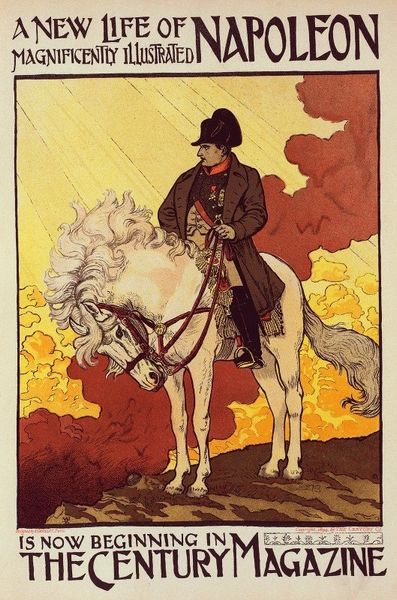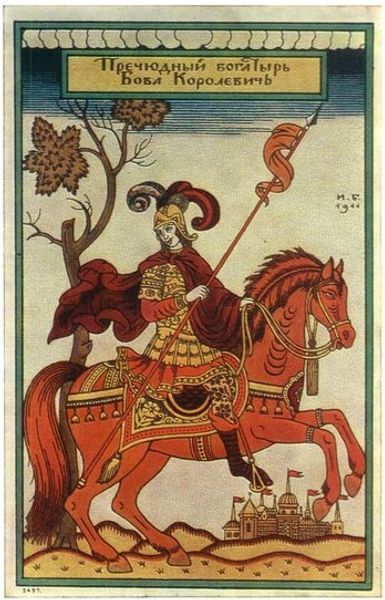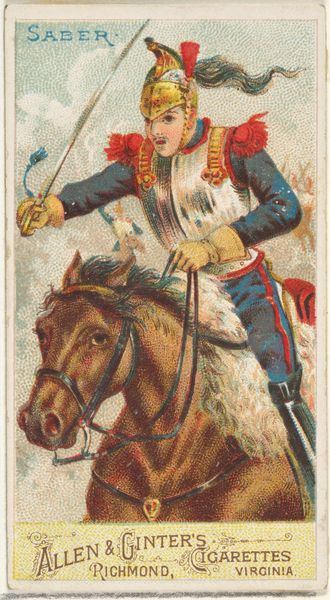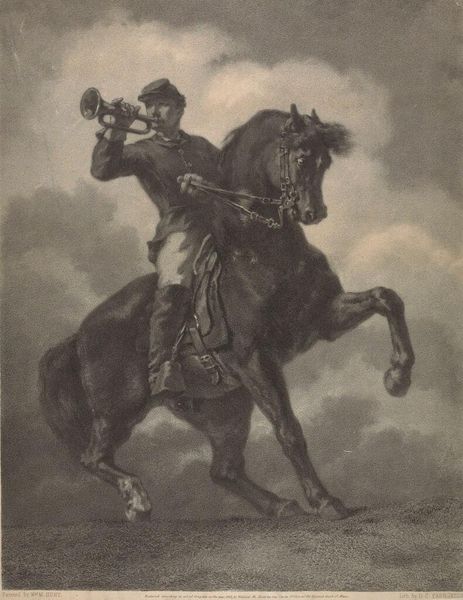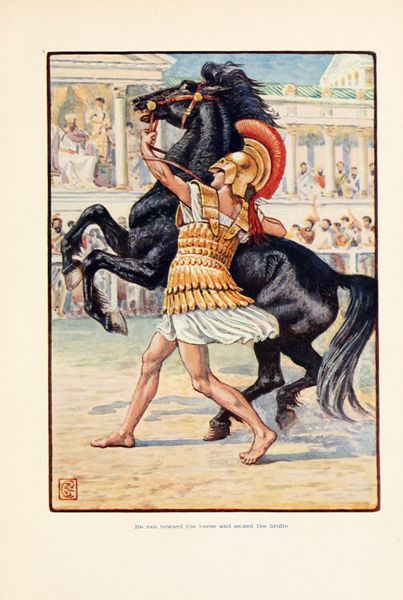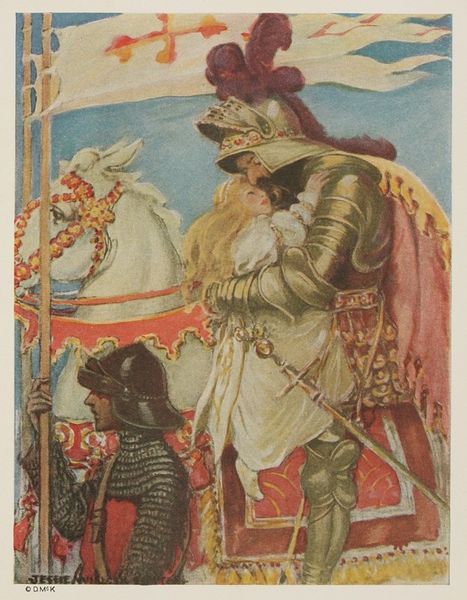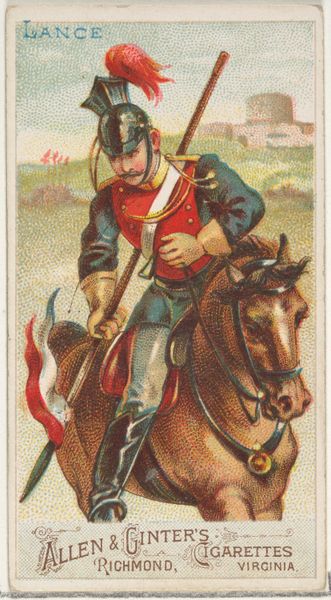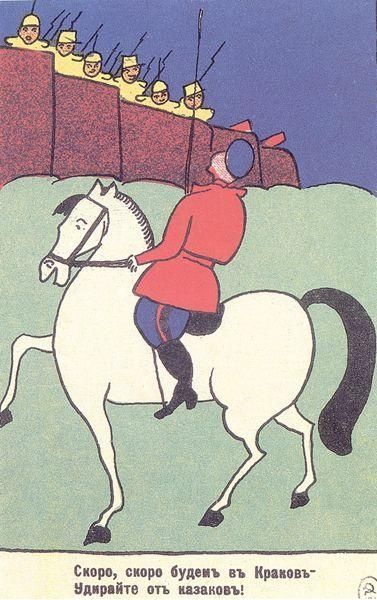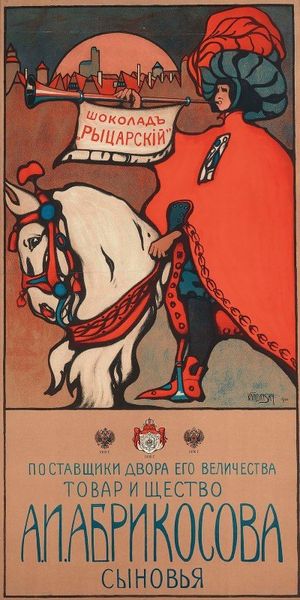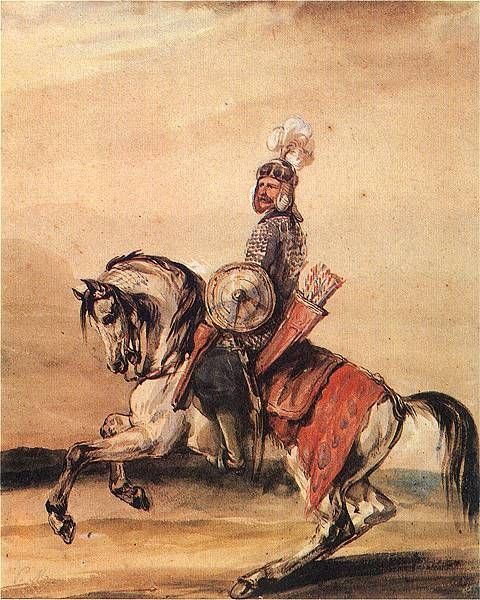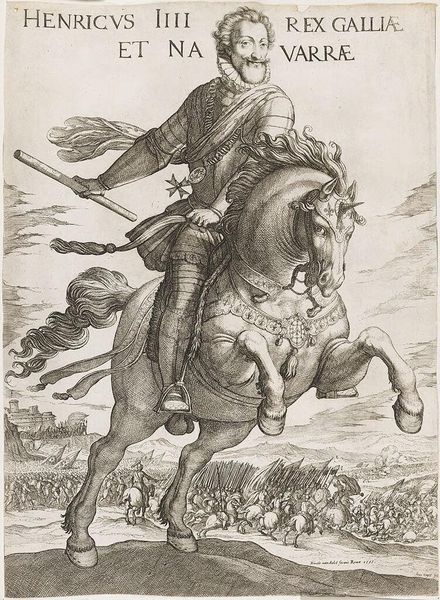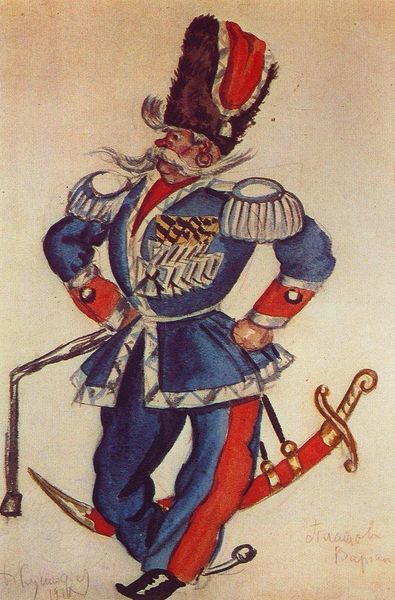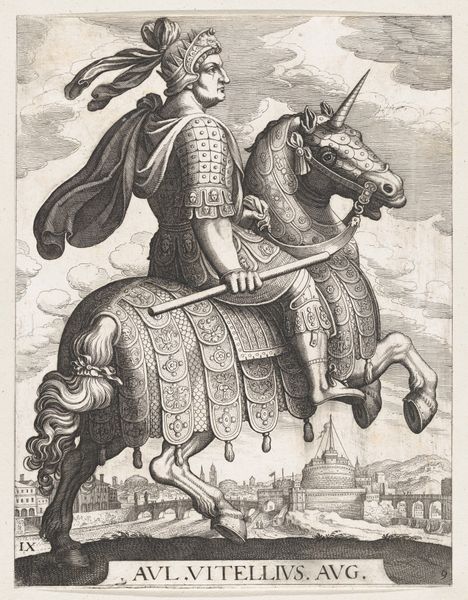
lithograph, poster
#
art-nouveau
#
lithograph
#
landscape
#
caricature
#
figuration
#
orientalism
#
genre-painting
#
academic-art
#
poster
Copyright: Public Domain: Artvee
Curator: Jules Chéret's 1899 lithograph, "Exhibition D’arabes Du Sahara", is an example of how the aesthetics of Orientalism were commodified through poster art during the Belle Époque. Quite a mouthful, isn't it? Editor: It certainly is! My first thought is actually…thrilling! The energy! It’s like a sandstorm captured on paper. This figure on horseback, sword raised, really grabs your attention. There's such drama. Curator: Absolutely, and that dynamism relies on specific techniques tied to the printmaking process. Consider how the stark contrast between the dark figure and the creamy background is achieved, or how the lithographic process lends itself to the vibrant but flat colour blocks of red and gold within the details of the horse's ornamentation. The poster would've been mass produced using lithographic stones to maximise profits. Editor: Those details – the ornamentation of the horse and rider, feel so romanticized and exotic. There's this undeniable feeling that we're seeing a spectacle, a carefully curated representation rather than… reality. You mentioned Orientalism; I feel it very strongly here, it's so...perfumed, I almost sense the spices when I stare at the piece. Curator: Indeed. The poster served to entice Parisians, many of whom would have had limited exposure to Saharan cultures, into the Olympia Hippodrome, and a commodified view of "Arabs" became a product consumed and traded through Chéret's image. Even the medium, a lithographic poster meant to be plastered all over the city, implicates a vision of artistic distribution reflecting industrial progress. Editor: Makes you wonder about the real people, right? The lives and traditions behind this vibrant image. You get a sense of the cultural translation... maybe misinterpretation that occurred. The energy's still palpable, even as we decode the layers beneath. Curator: Ultimately, Chéret’s poster offers a tangible link to the historical systems of production and reception that both celebrated and constrained these cultural encounters at the turn of the century. Editor: For me, the power lingers in the suggestion: an invitation to adventure but one seen through a crafted European gaze of then-distant lands. Still captivating though, centuries later.
Comments
No comments
Be the first to comment and join the conversation on the ultimate creative platform.
